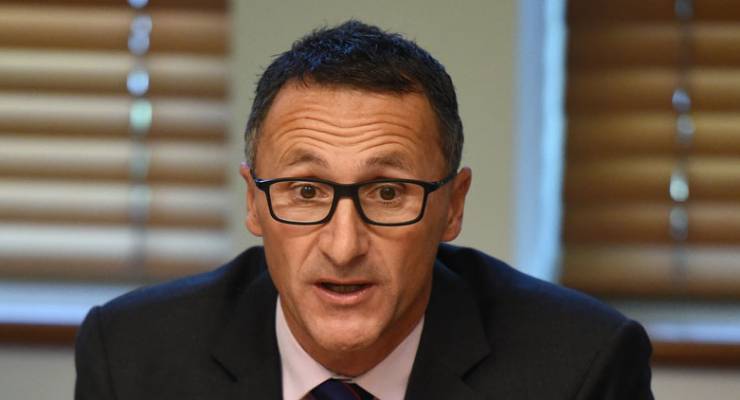
Even before last night’s decision for an early election, the question of Liberal Party preferences was back in the news. A report on Saturday had Victorian state Liberal president Michael Kroger elaborating on the rationale behind his earlier musings about directing preferences to the Greens.
“So why the concentration and discussion on preferences?” Kroger reportedly said. “Because across the country, Labor gets 60% of minor party preferences; in Victoria they get 66%.”
This issue isn’t going to go away; we’ll be deluged with commentary about preferences right up until how-to-vote cards are actually handed out. So it’s worth taking a moment to check Kroger’s claims.
His figures do stack up (you can work it out yourself from the AEC’s data here). In the country at large, Labor gained 60.3% of the preference flow from other parties at the 2013 election. In Victoria it was 65.9%.
If the Victorian figure had matched that in the other states, it would have been worth something over 1.5% in the two-party preferred vote to the Liberals. That’s not enough to bring the performance of the Victorian Liberals up to the national average, but it’d be a decent step towards it.
There are basically two reasons why Victoria is different on preferences. The much more important one is that the parties that preference the Coalition just don’t do as well in Victoria: Palmer United, Katter’s Australian Party and the Christian Democrats all gave the Coalition a boost in other states; in Victoria, the first two were much weaker and the third doesn’t exist.
Of the 10 largest minor parties by House of Representatives vote, those whose preferences favoured Labor and those whose preferences favoured the Coalition had almost equal strength nationwide: 9.5% each. But in Victoria, the first group had about double the vote of the second group, 13.4% to 6.9%.
The second reason is the behavior of Greens preferences. Nationwide, they favoured Labor to the tune of 83%, but in Victoria it was 85.8%. Nor is this unique to 2013. In 2010 it was 78.8% to 81.2%. That’s not a big difference, but in a close election it could still be very important. So it makes sense for the Liberals to try to dislodge some more Greens voters.
(Disclosure here: the Greens candidate for Batman, one of the seats that would be involved in any deal, is a personal friend.)
The prospect of a deal with the Liberals (even a very informal one) raises some interesting issues about what sort of party the Greens are or are trying to be. Are they inherently a left-wing party or a middle-class party? Are those two things in conflict or not?
But the really interesting thing, it seems to me, is that there is so little discussion of what it tells us about the sort of beast the Liberal Party is. And that’s odd, since with the Turnbull-Abbott feud still traumatising the party — a battle for the party’s soul, as some would have it — the nature of the Liberal Party is a hot topic.
Perhaps the reason that we don’t talk about the philosophical nature of the Liberal Party is that it doesn’t have one: that it is just a machine for keeping and holding political power. But if that’s true — and the party sometimes comes uncomfortably close to admitting that it is — then the question of preferencing the Greens should be a no-brainer.
If power is all that matters, then preference decisions should be made so as to maximise the disruption and internal conflict among one’s opponents, forcing the other side to spread their resources across more targets. For an idea of how to do this, look at the way Labor has behaved over the years in Liberal vs National Party seats.
In reality, I think the Liberal Party is more than that. Historically, it has been a vehicle for class interest; for countering Labor’s representation of the working class by organising to defend the interests of the middle class and the owners of capital. On that score, it would be utterly mysterious why it would feel more threatened by the Greens, an impeccably middle-class bunch, than by Labor.
Tony Abbott and his allies tried to turn the party into something different again: an ideological force, promoting a particular brand of conservatism. On that basis, war against the Greens makes sense. If your enemies are science, feminism, peace, equality and “the left” in general, you’re probably not going to find much common ground with the Greens.
But an earlier generation of Liberals, who took their party’s name more seriously, might have seen things differently. The tradition of liberalism — based on individual rights, market economics and democratic politics — would provide a basis for at least limited co-operation with the Greens. More so, anyway, than with the collectivism of the Labor Party.
That seems to represent the direction that Malcolm Turnbull has in mind for the party, but the angst over Greens preferences is only one sign among many that he’s facing an uphill task.
I’ve been making this point for more than a decade, but it’s worth repeating: when parties argue about preferences, they might sound as if it’s all about tactics, but it’s usually about ideology.
*Disclosure: Charles Richardson was a member of the Liberal Party until 1996








Two thoughts:
1. Victoria has been the home of progressive politics since protectionism was progressive (circa 1895). First home to Menzian Liberals, then new Labor, now the Greens.
2. Michael Kroger is one of very few Liberals who can imagine the future through different lenses, and thinks about strategic ends, not temporal hostilities.
For the most part this is a reasonable article on the fact that, as has been the case for a number of federal and state elections in Victoria, the Liberals have a hard choice of who to recommend last in their preferences – their main rival for power, or the party furthest from them in most policy areas.
The headline however is quite misleading, and only plays along with the recent Labor scaremongering over a non-existent deal, as well as promoting the misconception that all decisions on preferencing are the result of deals. If you decide to hand out a how to vote with a formal vote shown, then you need to indicate a preference for every candidate regardless of whether or not there is a deal. In 2010 in Melbourne the Liberals put Greens above Labor, in 2013 the other way around. In neither case was there a deal, they just had to decide one way or another.
What a disgraceful beat up.
Fully in tune with the mass media line that if a COALition fella [either a journo or a pollie or, as in this case, Kroger] says something we like that fits our preferred meme or narrative we will run with it.
Even when there is absolutely no evidence at all that the Greens are involved, we will speculate, purely on the weight of our unsubstantiated presumption, about all kinds of nuances and complexities which we can use to keep the ball rolling even when there is no ball.
You can yak about what is going on in the backrooms of COALition or ALP HQs but until you have something to actually base the airy guesses on keep the Greens out of it.
When asked recently if the Greens would consider some kind of future ‘coalition’ with the LNP in the federal sphere…DiNatale answered that he would “never say never”.
Now…what was that about deals only being done in the backrooms of the LNP and ALP???
Get real! Your beloved Greens have just done a dirty deal with the LNP and Xenophon to rig the Senate. Politicians are all the same!!
I take it that you are unaware that the proposal for the Senate changes came from a multi-party Senate committee?
That that committee included Labor members who were in favour of the changes?
That those ALP members included then Shadow Minister for State Gary Gray who stated categorically that he was in favour of the changes and therefore in tune with the Greens ..and the Libs and others?
And that it’s not surprising he was in favour because the proposed changes were in line with the submission of the ALP to the committee and that in turn was because it had been their stated policy since 2014?
So there was no ‘dirty deal’ between LNP Greens and X at all but an agreed proposal from all parties [including an Independent]?
Does that surprise you?
And only later did the ALP kick up a fuss and their motives for such, and the disinformation that came from them and the media in general is the real ‘dirty ‘ aspect of the whole affair.
Rule#1 – don’t trust what you read in the media.
I agree that it makes sense to preference Greens to disconcert Labor but, apart from the loathsome Black Wriggler currently trashing the party, no Green would piss, sorry, pass on preferences to any tory within spitting distance of Kroger.
OO, scary! What kind of party are the Greens! They are one that wants more power and that isn’t afraid to bite.